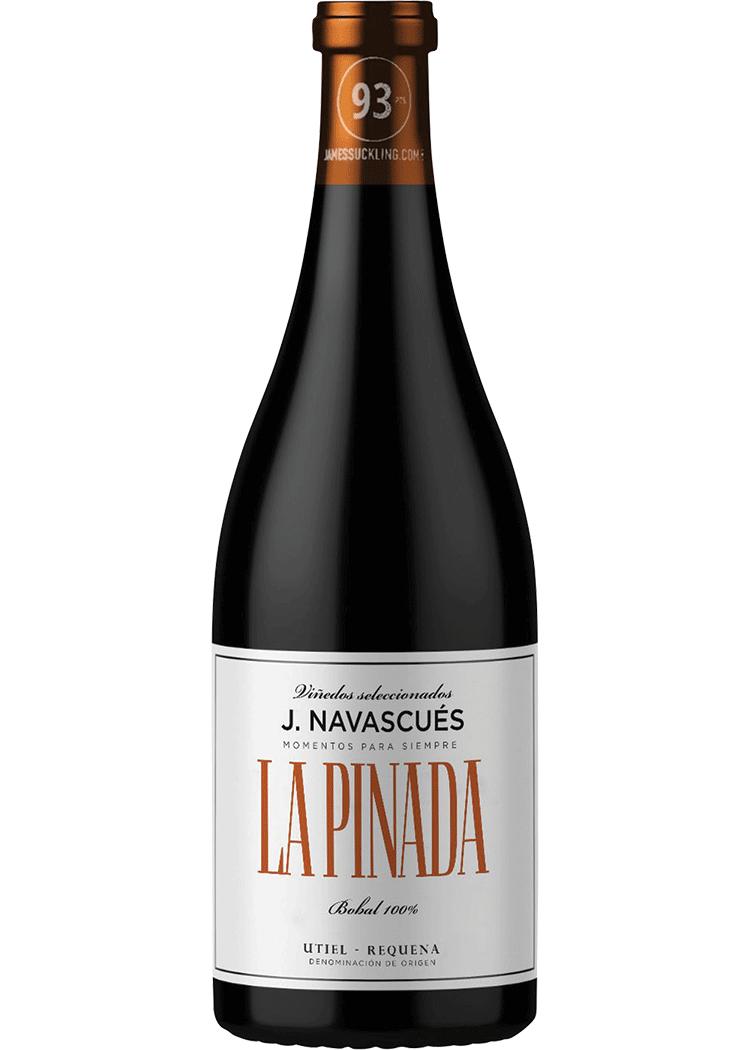tap to enlarge
J. Navascues La Pinada Bobal, 2017
750ml
$14.99
+CRV
Mix 6 for $13.49 each
*Price, vintage and availability may vary by store.
*Price, vintage and availability may vary by store.
Product Highlights
James Suckling-Valencia, Spain - "A linear and bright Bobal with juicy-fruit, sweet-herb and black-tea aromas and flavors. Medium to full body. Juicy tannins." Pairs wonderfully with a rice dish, such as paella.
BlackberryCherry
Product Details
OVERVIEW
Geography
This DO is located just west of the Mediterranean city of Valencia in eastern Spain’s Levante region. The Valencia DO produces a range of wines from dry whites to rosés and reds. Moscatel de Valencia, a popular sweet wine made from Moscatel grapes, offers incredible value for the high level of quality. The continuous heat of the region limits the variety of grapes that can be successfully grown; however, Valencia is known for producing fresh and enjoyable white wines primarily made from Merseguera. Red and rosé wines are made mainly from Bobal blended with Garnacha, Tempranillo and Monastrell. Often referred to as "jóvenes" (young) wines, they are typically meant to be enjoyed immediately and are not well suited for aging.
Varietal / Type
Red grapes produce an amazing array of red wine types: from the boldest, heartiest big reds, to elegant and structured dry red wines, to sweet and simple picnic sippers. So much depends on where grapes are from and what the winemaker does with them, but the most important factor is the variety of the grape itself.
There are the familiar international red varieties – Cabernet Sauvignon, Pinot Noir, Merlot and more – produced in the world’s top winemaking regions. Then there are regional red varieties, which produce types of red wine nearly synonymous with their place of origin, such as Sangiovese, from Italy, and Tempranillo, from Spain. There are hundreds more red grape varieties regularly used to make wine around the globe.
Most red wine varietals fare best in warmer climates, where they can ripen fully before harvesting. So climate and soil – as well as market demand – determine the best grape types to plant in a particular vineyard. In Europe, centuries of tradition, trial and error determined what wine grapes grew best where, and modern regulations have enshrined those winemaking practices into law.
Our red wine guide details the flavor profiles and regions of the most popular red varieties – plus a few you may not yet know. Use it as a road map for Total Wine & More’s selection of more than 8,000 wines. You’ll learn everything there is to know about your favorite red wines, and we’re sure you’ll find some new red wines to love.
